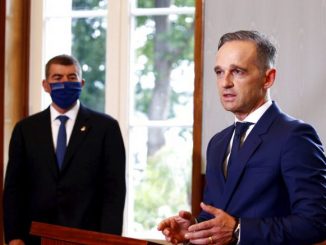

It may come as a surprise to some viewers to learn that Wuhan is more than 1,000 miles from the bat cave that’s being cited by the World Health Organization as the virus’ origin.
According to the current theory being promoted by the WHO, the virus somehow managed to make its way across all of China — without leaving a single known trace — only to miraculously break out in the city where the lab is located.
We found extensive evidence that the lab conducted so-called gain of function experiments. These experiments are designed to increase the transmissibility of viruses in order to mimic and accelerate the virus’ natural evolution.
In order to conduct these experiments, the Lab required viral samples. And that required the transportation of bat samples, or — depending on who tells the story — the bats themselves, to the Wuhan lab in order to conduct experiments on the virus.
The research by the Wuhan lab facility has been factually documented in Chinese news broadcasts and academic research papers.
Prominent scientists had warned about the gain of function experiments at the lab in the years preceding the pandemic.
Even the Obama administration banned gain of function experiments in 2014, noting that the experiments were simply too risky.
But the experiments continued at the Wuhan lab. And it’s here that we first encounter Dr. Fauci and Peter Daszak.
Daszak serves as the president of the EcoHealth alliance, a non-profit that conducts research on global health issues. Fauci was, and still remains, the director at the National Institute of Allergy and Infectious Diseases
Fauci’s organization provided a $4 million grant to Dazak to continue conducting research on bat coronaviruses. Part of that grant money was sent to the Wuhan lab, apparently circumventing the Obama administration’s ban on gain of function experiments.
In 2018, further alarms were sounded when U.S. Embassy staff in China warned about risky Coronavirus experiments at the Wuhan Lab. They sent a team to inspect the lab and diplomatic cables sent back to Washington revealed grave concerns about biosafety at the lab.
Those official concerns went unheeded by the Chinese government.
Then, in the Fall of 2019, some Wuhan lab staff got sick with flu-like symptoms. At least one lab staff member disappeared altogether. Her profile has been scrubbed from the lab’s website but remains preserved in internet archives.
Shortly after the Wuhan outbreak, a whistleblower who worked at a university in Wuhan published a paper laying out why the virus most likely escaped from the lab. His paper was quickly taken down but remains archived. He has also disappeared.
There is a wealth of evidence pointing to the Wuhan lab as the virus’ origin. Meanwhile, there is very little, if any, evidence pointing to zoonotic transmission — casting further doubt on either the bat cave or the Wuhan wet market as being the origin of the virus.
There is also no plausible theory that explains how the virus managed to jump 1,000 miles from a bat cave in Yunnan all the way to Wuhan without leaving a trace anywhere along the route.
No viruses that match the Wuhan virus have been found in bats. No intermediary host animal has been found either.
It appears that the Lab Leak theory is the one theory backed by a preponderance of facts and evidence.
So why is the World Health Organization’s investigative focus being directed towards natural origins instead of a lab leak?






Be the first to comment